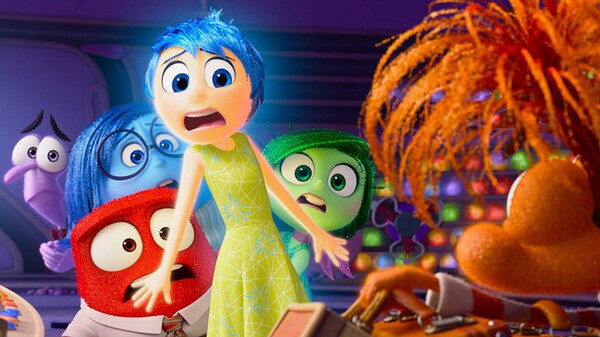WHAT CAN WE LEARN FROM THE SERIES THIRTEEN REASONS WHY?
Thirteen Reasons Why
is one of the most recent media blockbusters of the growing film company
Netflix and in the past few weeks it has become an ideal product of
consumption for lovers of “binge-watching”. In essence the American series
can be classified as a brilliant adaptation of the best-seller by Jay Asher
of the same title, published in 2007. Its social impact is also
considerable, since its excellent narrative unfolds through thirteen
chapters with their respective ascending tone. In them, director Brian
Yorkey tells us the story of Hannah Baker (Katherine Lagford), a teenager
who has made the decision to take her own life, leaving as a testament
thirteen audio-cassettes in which she explains the reasons that caused her
to take the fatal step of suicide. It appears to me that from the
aforementioned tragedy there can be drawn three reflections which can be
used to “inoculate” those interested in delving into this emotionally
painful series.
1. Suicide as a Failed Solution
As it has already been mentioned, the principal theme of the series alludes
to the reasons why a young woman decides to take her life. The music and
the set design work together to pull us into this terrible drama. These
images have caused no little stir in education and in pro-family
associations, for one must accept that we live in a society that is still
scandalized (though progressively less so) before the image of teen
suicide. However, it is possible that few have stopped to consider the
reasons for which such a delicate subject generates so much interest, for
it is evident that the series contains an element of truth. It seems to me
that currently we are not really sensitive to the boredom and the
loneliness with which our adolescent children live. It is enough to look in
their eyes to perceive their weariness, in the midst of a society that
suffers pangs of conscience and winds up perplexed contemplating its own
ignorance. Meanwhile, the series raises up Hanna as a “martyr” of those
liberal ideas, “giving” her life so that others may understand the evils
that await women who continue to be more vulnerable than men. It would seem
that modernity continues to be determined to create “heroes” whose free and
heroic acts tend toward self-destruction. In the end, Hanna cleverly
devises her own death, and comes up with a plan that will absorb the
attention of her social circle, a staging of her suicide that can become a
great “breeding ground” to feed all kinds of social disorders disguised
with a false “cloak of heroism”, as we are already seeing with the media
phenomenon Blue Whale.
2. Being Parents of a Girl is Not Easy
Parents and their linked stereotypes make their appearance in the series,
from the pseudo-conservative family to the dysfunctional family (with a
violent stepfather and drug-addicted mother), until we come across a
“homoparent family”. Recognition is made with great fanfare of the
diversity of orientations and preferences belonging to liberal society in
its American version. Nevertheless, in none of the cases is there a real
concern on the part of the parents for their children. Care and affection
is little and precarious, and above all superficial. Hanna’s parents, Andy
and Olivia, are an icon of this deficient kind of parenting. They are
completely ignorant of the actions of their daughter, opting to look for
answers that are merely current, mediocre, to the point of initiating a
“witch hunt” in the style of The Dead Poet’s Society. But their
absence and superficiality affect in a definitive way Hanna’s sad fate, a
fact which does not excuse one of the most widespread evils in the West,
that is, the “nausea of emptiness” – as Alejandro Llano would say—before
the banality of existence itself. In this sense, Thirteen Reasons Why can serve as a “wake-up call” for
contemporary parents, who should take their family life with their children
in their homes more seriously. Having said that, it is evident that the
feminine characters are apparently innocent throughout the entire series.
But as the storyline progresses, one can appreciate the recurring theme
that assigns to the woman the difficult part of the permanent “victim”. As
for the men characters, except for an occasional confused exception, they
are shown as wicked, abusive and thoughtless, who live only to satisfy
their sexual appetites, giving homage to the term Toxic Masculinity. Nevertheless, the pedagogy of exaggeration
around the masculine figure could turn out to be insipid for many, even
tending toward the infantile. In the end, one of the main reasons for which
Hanna decides to kill herself is because she has lost hope of being loved by a man. This last
declaration can nullify all pretension of exalting this series as an
apologetic attempt to justify the postulates of radical feminism.
3. Friendship and Superficial Sexuality
Perhaps a powerful theme that attracts the public like “bees to honey” is
the topic of friendship and its distortion in matters of sexuality. In Thirteen Reasons Why this sad reality is reflected:
if you are kind and trusting, it is impossible to have sincere friends
. In this sense it is evident that Hanna has a great capacity for love, but
is always let down and hurt by those around her. The interest, the
affection, the respect that the suicidal girl professes toward others
appears to be in vain, for no one is able to take on all that she is and
feels. Perhaps this is due to the fact that we live in an individualistic
and materialistic society, incapable of treating others with the definitive
dignity due to them, and the result is that the majority of young people
seek to affirm themselves by devoting themselves to behaviors that lead
them away from a “successful life”. It is here where the trivialization of
sexual relations makes its expected appearance. One does not have to be
very observant to conclude that the series presents active sexual life
among teenagers as just another activity or as an inalienable right of any
relationship between man and woman. Nevertheless, as the very word
promiscuity suggests, sexual relations at the wrong time confuse things,
and this also is made clear in the storyline, Hanna being a clear victim of
this disorder.














